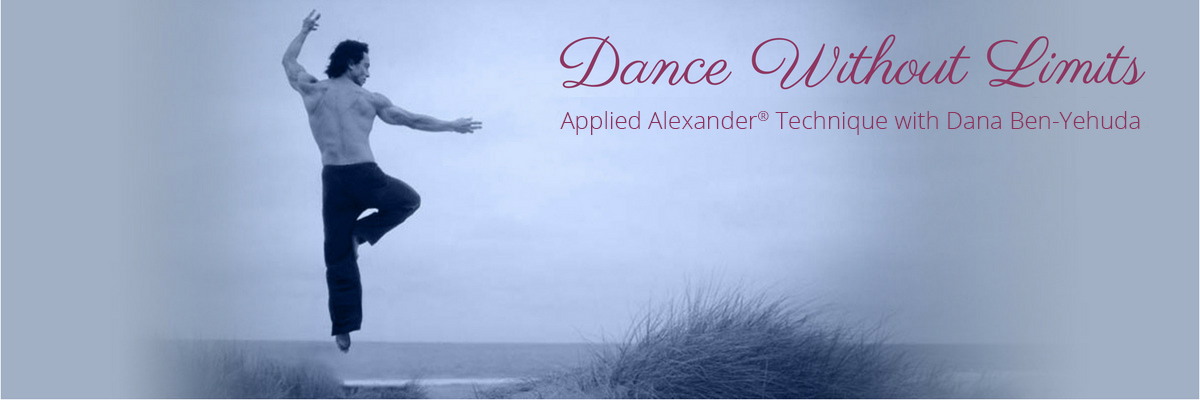Alexander Technique – Making the Crooked Straight
Making the Crooked Straight
– by Simona Fuma – reprinted with permission
They’re the words a girl loves to hear: “Have you gotten taller?” “You’ve lost weight!” Such were the unsolicited comments I received when I visited the United States from my home in Israel recently, where, for the last three months, I had been practicing the Alexander Technique (AT)-a movement re-education program that involves hands-on adjustments to improve posture and coordination.
While yoga, Pilates and other posture-enhancing methods have swept the U.S. in recent years, AT has enjoyed a thriving presence under the radar. Its hubs include London, New York, San Francisco and Israel, which boasts one of the highest numbers of AT teachers per capita (300). Stateside, there are an estimated 800 certified teachers and tens of thousands of students.
Oscar-winning actress Hillary Swank was one of those students while preparing for her 2001 role as an 18th-century French countess in The Affair of the Necklace. “Jean Louis [her AT instructor] taught me that an aristocrat didn’t just sit down in a chair,” Swank famously told the The New York Times. “She floated down. And she floated up and down stairs. She certainly didn’t climb them, for that implies effort.” AT also counts Lady Judi Dench, Paul McCartney and Sting among its famous fans.
According to Dana Ben-Yehuda, media spokesperson for the American Society of the Alexander Technique (AmSAT)-and, perhaps fittingly, the daughter of an Israeli father-in the U.S. the Alexander Technique is popular among two categories of people. “Singers, actors and musicians use the technique to enhance their performances,” she explains. In fact, the father of AT, Frederick Matthias Alexander (1869-1955), was an Australian actor who developed the method to help him overcome chronic laryngitis.
The other category comprises people who are in pain and looking to AT for relief. After all, most health experts agree that good posture and proper muscle relaxation go a long way toward preventing back pain, the fifth most frequent reason for all physician visits in the U.S.
Dr. Howard L. Rosner, medical director of The Pain Center at Cedars-Sinai Medical Center in Los Angeles, says that the number one complaint of the patients he sees is lower back pain, and he recommends the Alexander Technique, along with other forms of physical therapy, to treat muscular-skeletal pain. “The Alexander Technique can retrain people to use their bodies more constructively,” he says. “It can impact neck pain, low back pain and carpal tunnel syndrome.”
The overarching goal of AT is to guide patients through a series of simple movements that teach control and coordination in everyday activities, from sitting and walking to lifting a shopping bag or playing a musical instrument. It is usually taught one-on-one with a certified teacher, and, according to AmSAT, it will take at least 6-10 sessions, lasting anywhere from 30-60 minutes each, to feel the effects. (For those looking to significantly improve their posture, however, AmSAT recommends a series of 30 lessons across a three- to six-month period. Cost depends on the instructor. For the best results, find one who has completed an AmSAT-approved 1,600-hour, three-year training course.)
Most AT instructors devote the first few lessons to helping patients let go of unnecessary muscular tension. As my teacher, Aviva Shapira, gently pulled my head and neck up in order to lengthen my spine, she explained to me that by the time we are adults, most of us have developed poor posture patterns wherein all kinds of muscles contract and stiffen just so we can hold ourselves upright. This way of holding ourselves feels natural to us, but it is actually unhealthy and can lead to stiffness and chronic pain. Shapira also had me lie on a padded masseuse table, where she proceeded to manipulate my head, neck, back and limbs into their proper positions. Afterward, as I lifted myself from the table, I could already sense a change in the way I was holding myself.
Practicing the Alexander Technique has left me with the beautiful-yet admittedly frustrating-insight that our bad habits are not readily apparent to us. Each of us is equipped with a kinesthetic sense that allows us to assess where our body is in space, as well as the effort needed to move it. However, bad habits distort this sense: a person with poor posture may not be aware of it because being hunched over feels natural. With guidance and practice, we can learn to correct our posture, though such change accumulates so gradually that we may not perceive it ourselves at first.
Still, as my recent trip to the U.S. proved, someone who hasn’t seen you in a while is likely to notice. For me, I particularly appreciated the comments that I looked thinner-especially since the number on the scale hadn’t actually changed!
To learn more about the Alexander Technique, visit the American Society for the Alexander Technique Web site, www.alexandertech.org.
Simona Fuma is the Israel Editor for World Jewish Digest.
Issue Date: January 2007, Posted On: 12/28/2006
This article is also available at my AltMD blog.
